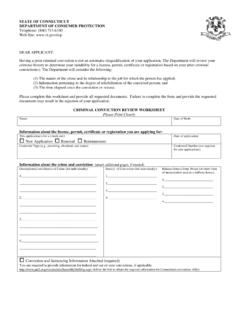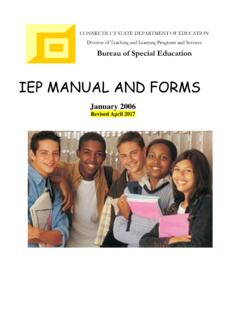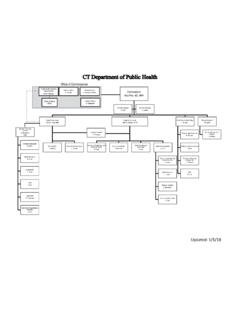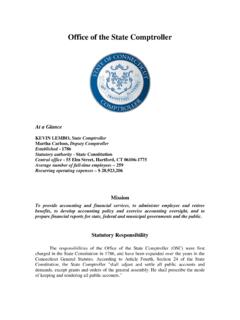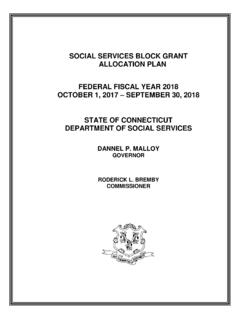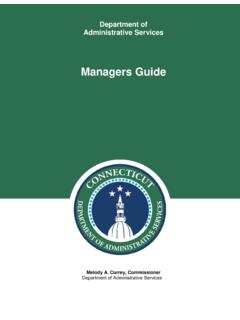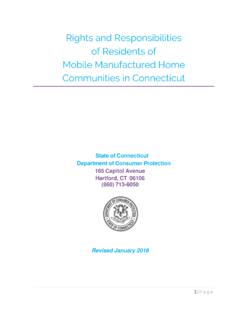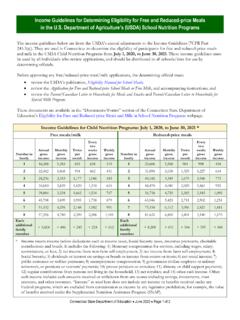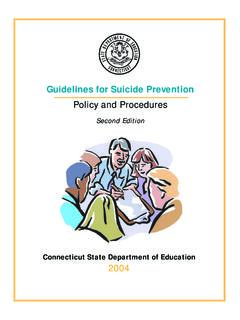Transcription of A Guide to Curriculum Development: Purposes, Practices
1 A Guide to Curriculum Development: Purposes, Practices , Procedures The purpose of this Guide is to provide some general instructions to school districts as staff begin to develop or revise their Curriculum guides. This document provides an overview of the Curriculum development process and suggests a series of steps to follow in creating Curriculum documents. Currently, the State Department of Education has comprehensive program development guides in Mathematics, Physical Education and World Languages located at the Curriculum web site. Overview A Curriculum Guide is a structured document that delineates the philosophy, goals, objectives, learning experiences, instructional resources and assessments that comprise a specific educational program. Additionally, it represents an articulation of what students should know and be able to do and supports teachers in knowing how to achieve these goals.
2 Accordingly, an exemplary Guide is a tool that assists in planning and implementing a high quality instructional program. It: establishes a clear philosophy and set of overarching goals that Guide the entire program and the decisions that affect each aspect of the program; establishes sequences both within and between levels and assures a coherent and articulated progression from grade to grade; outlines a basic framework for what to do, how to do it, when to do it and how to know if it has been achieved; allows for flexibility and encourages experimentation and innovation within an overall structure; promotes interdisciplinary approaches and the integration of curricula when appropriate; suggests methods of assessing the achievement of the program's goals and objectives; provides a means for its own ongoing revision and improvement; and provides direction for procurement of human, material and fiscal resources to implement the program.
3 The formulation of such a school or district Curriculum Guide should not be viewed as the culmination of the Curriculum development process, but rather as an essential step in the process of ongoing Curriculum development and implementation. Thus, no Guide will be perfect. No Guide will ever be a finished product cast in stone. No Guide will be free from criticism. However, to be effective, a gui de must earn acceptance by teachers and must be deemed educationally valid by parents and the community at large. This acceptance will be far easier to attain when the Curriculum Guide is: consistent with what is known about child growth and development; compatible with the general philosophy of the school system; 1 based upon clear convictions about teaching and learning; representative of instructional activities to meet the needs of students with varying abilities and needs; articulated from kindergarten through grade 12; easy to use by all educators; filled with samples, examples, and suggested resources; developed collaboratively by a broadly-based committee of teachers and other interested stakeholders; and linked to teacher evaluation goals and professional development.
4 The Curriculum Development Process The development of an effective Curriculum Guide is a multi-step, ongoing and cyclical process. The process progresses from evaluating the existing program, to designing an improved program, to implementing a new program and back to evaluating the revised program. Many school districts carry out this process in a planned and systematic manner that includes the eleven components listed in Figure 1-1. Each of these components is addressed in the sections that follow. Figure 1-1 Components of an Effective Curriculum Development Process A. Planning: 1. Convening a Curriculum Development Committee 2. Identifying Key Issues and Trends in the Specific Content Area 3. Assessing Needs and Issues B. Articulating and Developing: 4. Articulating a K-12 Program Philosophy 5. Defining K-12 Program, Grade-Level and Course Goals 6. Developing and Sequencing of Grade-Level and Course Objectives 7.
5 Identifyi ng Resource Materials to Assist with Program Implementation 8. Developing and/or Identifying Assessment Items and Instruments to Measure Student Progress C. Implementing: 9. Putting the New Program into Practice D. Evaluating: 10. Updating the Program 11. Determining the Success of the Program 2 A. Planning 1. Convening a Curriculum Development Committee. Such a committee, consisting primarily of teachers who represent the various schools and grade levels in a district, administrators, members of the public and perhaps students, becomes the driving force for Curriculum cha ng e and the long-term process of implementing the Curriculum . It is critical that an effective, knowledgeable and respected chairperson lead such a committee and it includes knowledgeable and committed members who gradually become the district's de facto experts during the development phases of the process as well as the implementation phases.
6 2. Identifying Key Issues and Trends in the Specific Content Area. The first step in any Curriculum development process involves research that reviews recent issues and trends of the discipline, both within the district and across the nation. This research allows a Curriculum committee to identify key issues and trends that will support the needs assessment that should be conducted and the philosophy that should be developed. Research often begins with a committee's reading and discussing timely, seminal and content specific reports from Curriculum associations. Committee members should examine what is currently being taught in the Curriculum . They should examine state and national standards in the discipline. Committee members should also be provided with recent district CMT and CAPT results and be familiar with the instructional materials and assessments in use throughout the program.
7 In addition, the committee should become familiar with newly available instructional materials particularly those that may eventually be adopted to help implement the new Curriculum . Committee members should also broaden their perspective and gather information by visiting other school systems that are recognized leaders in education. As a result of this process, committee members are likely to identify many of the following issues and trends that will need to be addressed as the Curriculum development process moves forward: meeting the needs of all students; learning theory and other cog nitive psychology findings on how students learn; what determines developmental readiness or developmental appropriateness; the current expectations of the field; the knowledge of and readiness for change on the part of teachers; the ava ilability of resources; the role and availability of information and technology resources; scheduling issues; methods and purposes of assessments; and 3 professional development.
8 3. Assessing Need and Issues. Curriculum development should be viewed as a process by which meeting student needs leads to improvement of student learning. Regardless of the theory or model followed, Curriculum developers should gather as much information as possible. This information should include the desired outcomes or expectations of a high quality program, the role of assessment, the current status of student achievement and actual program content. The information should also consider the concerns and attitudes of teachers, administrators, parents and students. The data should include samples of assessments, lessons from teachers, assignments, scores on state standardized tests, textbooks currently used, student perception and feedback from parents. Armed with a common set of understandings that arise from the identification of issues and trends, a Curriculum development committee is wise to conduct a needs assessment to best ascertain the perceptions, concerns and desires of each of the stakeholders in the process.
9 By examining this data carefully, it may reveal key issues that should influence the Curriculum design. For example: teachers may be dissatisfied with older content and techniques in light of recent research; test scores may be declining or lower than expected in some or all areas; teachers may not have materials or may not know how to use materials to enhance understandings; teachers may want to make far greater use of technology to enhance learning; teachers and others may wish to relate the content of the program more closely to contemporary problems and issues; teachers may be looking for ways to increase the amount of interdisciplinary work in which students are engaged; students may express a need for different and enriched curricular opportunities; parents and others may have concerns about implementation. Whatever the particular circumstances, an effective Curriculum development process usually entails a structured needs assessment to gather information and Guide the Curriculum development process.
10 The information, commonly gathered through surveys, structured discussions and test data, most frequently includes: teacher analysis of the present Curriculum to identify strengths, weaknesses, omissions and/or problems; sample lessons that illustrate Curriculum implementation; sample assessments that illustrate the implementation of the Curriculum ; 4 identification of what teachers at each grade level perceive to be the most serious issues within the Curriculum ; a detailed analysis of state and local test data, including CMT and CAPT scores, grade-level criterion-referenced test data and course final examination results; suggestions for change and improvement generated by meetings with teachers, guidance counselors and administrators; and parent and other community members concerns and expectations for the program obtained through surveys and invitational meetings.
